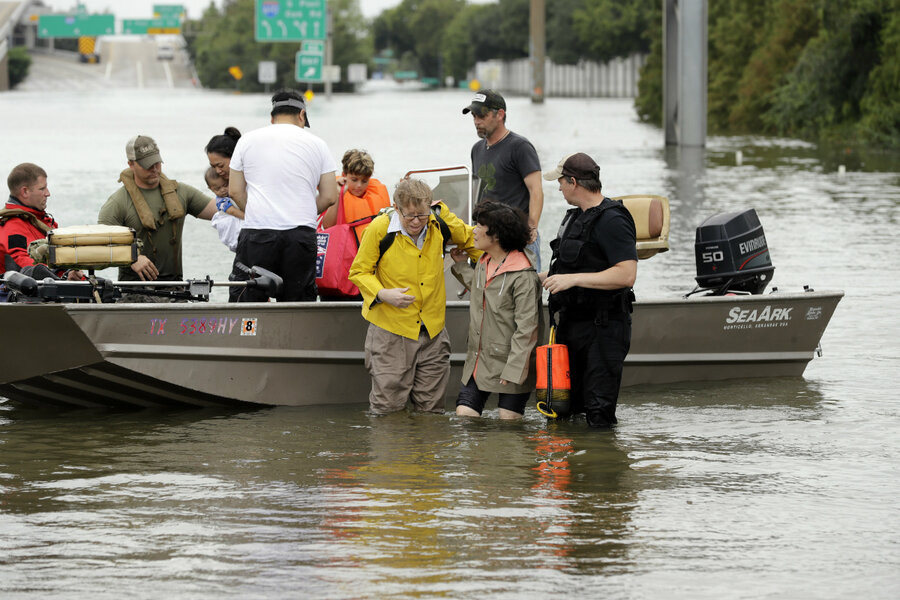US breaks record for disaster cost: $306 billion
Loading...
| Washington
With three strong hurricanes, wildfires, hail, flooding, tornadoes, and drought, the United States tallied a record high bill last year for weather disasters: $306 billion.
The US had 16 disasters last year with damage exceeding a billion dollars, the National Oceanic and Atmospheric Administration said Monday. That ties 2011 for the number of billion-dollar disasters, but the total cost blew past the previous record of $215 billion in 2005.
Costs are adjusted for inflation and NOAA keeps track of billion-dollar weather disasters going back to 1980.
Three of the five most expensive hurricanes in US history hit last year.
Hurricane Harvey, which caused massive flooding in Texas, cost $125 billion, second only to 2005's Katrina, while Maria's damage in Puerto Rico cost $90 billion, ranking third, NOAA said. Irma was $50 billion, mainly in Florida, for the fifth most expensive hurricane.
Western wildfires fanned by heat racked up $18 billion in damage, triple the US wildfire record, according to NOAA.
Besides Texas, Florida, and Puerto Rico, California, Colorado, Minnesota, Nebraska, Missouri, Illinois, Louisiana, Mississippi, Alabama, Tennessee, and North Carolina all had more than $1 billion in damage from the 16 weather disasters in 2017.
"While we have to be careful about knee-jerk cause-effect discussions, [many scientific studies] show that some of today's extremes have climate change fingerprints on them," said University of Georgia meteorology professor Marshall Shepherd, a past president of the American Meteorological Society.
NOAA announced its figures at the society's annual conference in Austin, Texas.
The US averages six of the billion-dollar weather disasters each year, costing a bit more than $40 billion annually.
The increase in billion-dollar weather disasters is likely a combination of more flooding, heat, and storm surge from climate change along with other non-climate changes, such as where buildings are put, where people move, and how valuable their property is, said Deke Arndt, NOAA's climate monitoring chief.
"Perhaps it is time to mandate urban development in a more resilient and sustainable manner given the increasing frequency of weather extremes, especially along the nation's coasts," Susan Cutter, director of the University of South Carolina's Hazards and Vulnerability Research Institute, said in an email.
The weather agency also said that 2017 was the third hottest year in US records for the Lower 48 states with an annual temperature of 54.6 degrees F. – 2.6 degrees warmer than the 20th century average. Only 2012 and 2016 were warmer. The five warmest years for the Lower 48 states have all happened since 2006.
Mr. Arndt said the US – which has had above normal annual temperatures for 21 straight years – is showing the same warming effects as the rest of the world. The burning of coal, oil, and gas emits heat-trapping gases that change Earth's climate.
This was the third straight year that all 50 states had above average temperatures for the year.
Five states – Arizona, Georgia, North Carolina, South Carolina, and New Mexico – had their warmest year ever.
Temperature records go back to 1895.
This was reported by The Associated Press.







